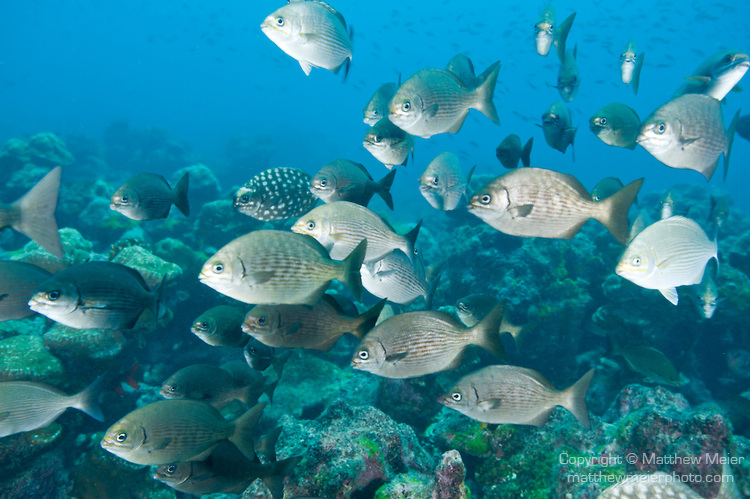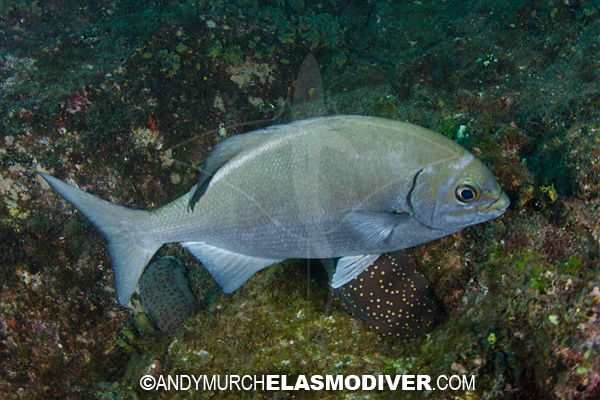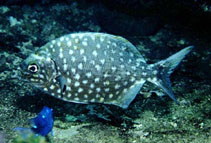
Kyphosus elegans
FAMILY
Kyphosidae
TAXONOMY
Kyphosus elegans Peters, 1869, Mazatlan, Sinaloa, Mexico.
OTHER COMMON NAMES
Spanish: Chopas.
PHYSICAL CHARACTERISTICS
Deep, compressed body with silver-gray color marked by faint
brown stripes between scale rows on the flanks. Can quickly
produce a pattern of white spots about the diameter of the eye.
The jaw teeth are fixed and not freely movable. To 15 in (38 cm)
total length.
DISTRIBUTION
Gulf of California south to Panama and west to the Galбpagos
Islands.
HABITAT
Rocky and coral reefs, usually in high-energy areas below the
surf zone.
BEHAVIOR
Often found in large schools swimming in the water column.
FEEDING ECOLOGY AND DIET
Omnivorous but feeds mainly upon benthic algae.
REPRODUCTIVE BIOLOGY
The eggs are pelagic and about 0.039–0.043 in (1–1.1 mm) in diameter.
Larvae hatch at 0.094–0.114 in (2.4–2.9 mm), are elongate,
have a large yolk sac, unformed jaws, and unpigmented eyes.
With growth, the head and mouth become large. Possesses a gas
bladder. Head spines develop as a specialization for pelagic life.
CONSERVATION STATUS
Not listed by the IUCN.
SIGNIFICANCE TO HUMANS
May be taken in subsistence fisheries or local commercial fisheries
as a food fish.
Photo Gallery of - Cortez chub





 Animalia Life
Animalia Life